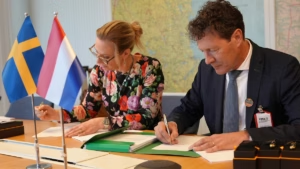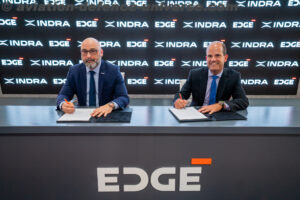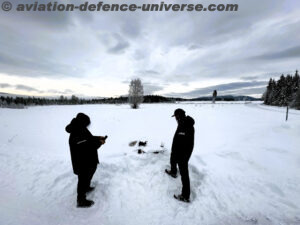- New Cockpit Voice Recorder Receives EASA Technical Standard Order
Davidson, N.C. 19 January 2021. Curtiss-Wright Corporation and Honeywell announced that their 25-hour Cockpit Voice Recorder (CVR) developed for the air transport market has received European Aviation Safety Agency (EASA) Technical Standard Order (TSO) certification. Based on Curtiss-Wright’s compact, lightweight Fortress® CVR technology, the new Honeywell Connected Recorder-25 (HCR-25) surpasses the requirements of the upcoming 2021 EASA minimum 25-hour cockpit voice recording mandate for aircraft weighing over 27,000 kilograms.
“The importance of reliable cockpit voice and flight data recorders cannot be overstated. That’s why we are working alongside Curtiss-Wright to design and develop the next generation of recorders that leverages our full hardware and software expertise to meet the 25-hour requirement, and identify the right information and make it available to accident investigation agencies when it’s most needed,” said Amanda King, vice president and general manager, Aerospace Connected Secure Solutions, Honeywell Connected Enterprise. “With the new regulatory requirement, we saw an opportunity to evolve our recorder technology to not only meet the conditions of governing agencies, but also make this product more powerful and better connected, providing aircraft operators with another source of data collection that can be used to improve aircraft maintenance and performance.”
Developed for customers that require Class 6 cockpit voice recorders, the HCR-25 CVR is ideal for both new installations and retrofit applications. It weighs less than 9.5 pounds (4.3 kilograms) and includes a 90-day underwater locator beacon.
“Both companies are pioneers and innovators of crash-protected recorders, providing flight recorders to the industry for over 60 years,” said Lynn M. Bamford, President and CEO of Curtiss-Wright Corporation. “Working together, we will take flight recorder connectivity and performance to new heights, with extended operation and greater survivability.”
Developing the Next Generation of Voice and Data Recorders
In 2019, Curtiss-Wright and Honeywell announced a partnership to develop a new way for airlines to monitor and analyze flight data. The companies signed an agreement to develop the next generation of mandate-compliant voice and data recorders, using real-time connectivity. This means the aircraft data can be used for more efficient operations, allowing for additional predictive maintenance and real-time playback of data and voice communications. Along with added connectivity, these next-generation recorders provide an easy upgrade that saves installation time and lowers costs due to being form-fit replacements for Honeywell’s HFR-5 series Cockpit Voice and Flight Data Recorders (FDRs).
As a source of critical aircraft data, “black boxes” passively collect large amounts of information from multiple sources during each flight. This ensures that in an accident, investigators can use the data to learn more about the chain of events leading up to it. This new recorder will serve as a “Black Box in the Sky”, meaning owners, operators and manufacturers can access the data at all times, resulting in the potential for better maintenance predictability and operational insight through data analytics. In addition, in an emergency, the data on board will be quickly accessible to investigators.
As part of the development of the new recorders, Honeywell will offer the product in several variants, including as a standalone CVR, as a standalone FDR, or as a combined voice and flight data recorder.


































































































































